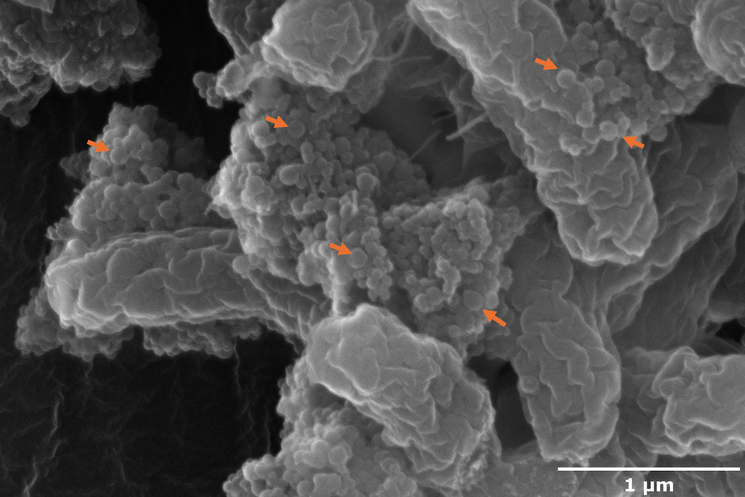2025-05-19 イリノイ大学アーバナ・シャンペーン校

Clusters of nanoplastics (red arrows) bind to E. coli O157:H7. Award winning image by Jayashree Nath, first author of the study.
<関連情報>
- https://aces.illinois.edu/news/could-nanoplastics-environment-turn-e-coli-bigger-villain
- https://jnanobiotechnology.biomedcentral.com/articles/10.1186/s12951-025-03369-z
病原性大腸菌O157:H7におけるナノプラスチックが介在する生理学的およびゲノム応答 Nanoplastics-mediated physiologic and genomic responses in pathogenic Escherichia coli O157:H7
Jayashree Nath,Goutam Banerjee,Jayita De,Noella Dsouza,Shantanu Sur,John W. Scott & Pratik Banerjee
Journal of Nanobiotechnology Published:21 April 2025
DOI:https://doi.org/10.1186/s12951-025-03369-z
Abstract
The widespread occurrence of microplastics (MP) and nanoplastics (NP) in the environment is commonly thought to negatively impact living organisms; however, there remains a considerable lack of understanding regarding the actual risks associated with exposure. Microorganisms, including pathogenic bacteria, frequently interact with MPs/NPs in various ecosystems, triggering physiological responses that warrant a deeper understanding. The present study experimentally demonstrated the impact of surface-functionalized differentially charged polystyrene (PS) NPs on the physiology of human pathogenic Escherichia coli O157:H7 and their influence on biofilm formation. Our results suggest that charged NPs can influence the growth, viability, virulence, physiological stress response, and biofilm lifestyle of the pathogen. Positively-charged NPs were found to have a bacteriostatic effect on planktonic cell growth and affect cellular viability and biofilm initiation compared to negatively charged and uncharged NPs. The transcriptomic and gene expression data indicated significant changes in the global gene expression profile of cells exposed to NPs, including the differential expression of genes encoding several metabolic pathways associated with stress response and virulence. Significant upregulation of Shiga-like toxin (stx1a), quorum sensing, and biofilm initiation genes was observed in NP-exposed biofilm samples. Overall, exposure to NPs did not significantly affect the survival of pathogens but affected their growth and biofilm development pattern, and most importantly, their virulence traits.


